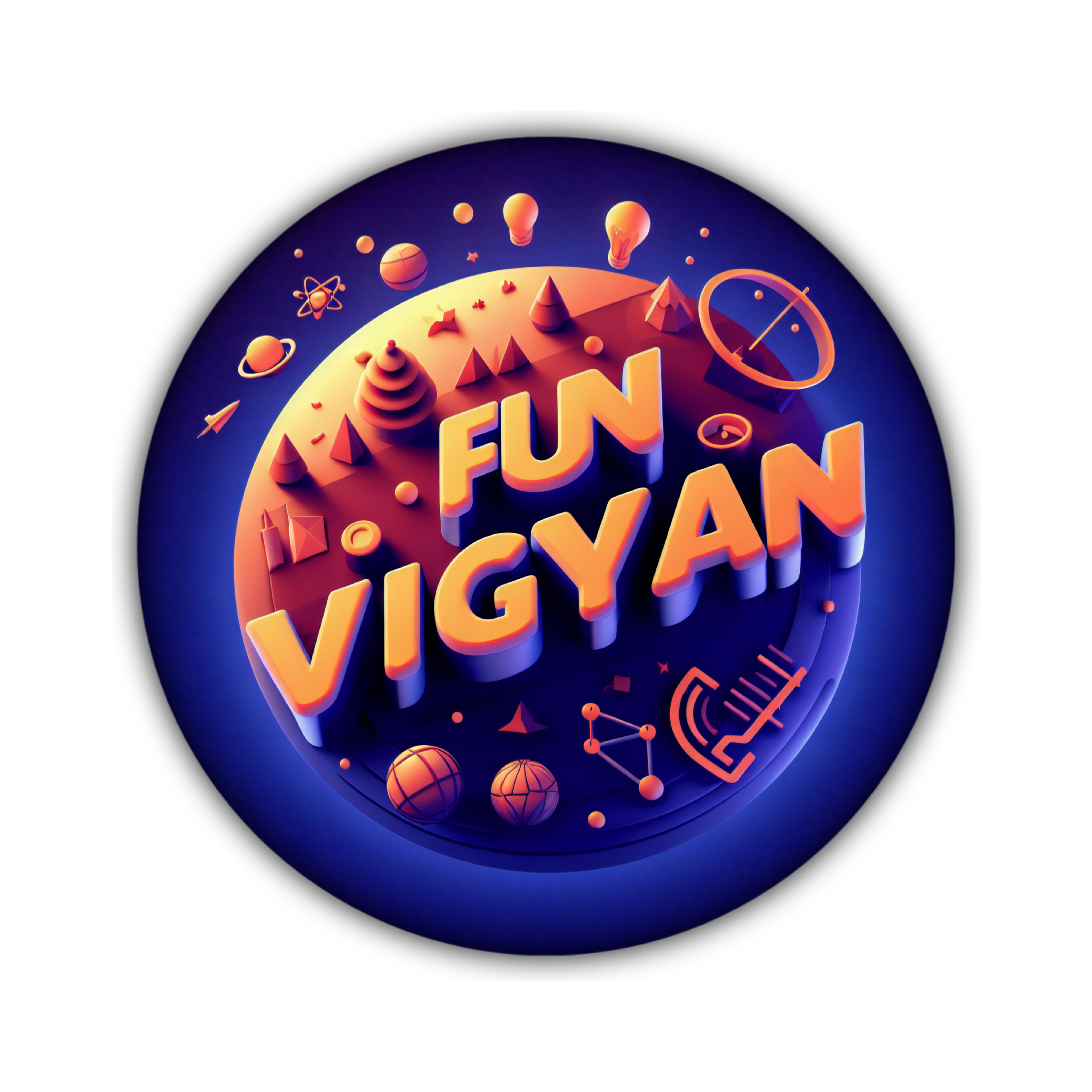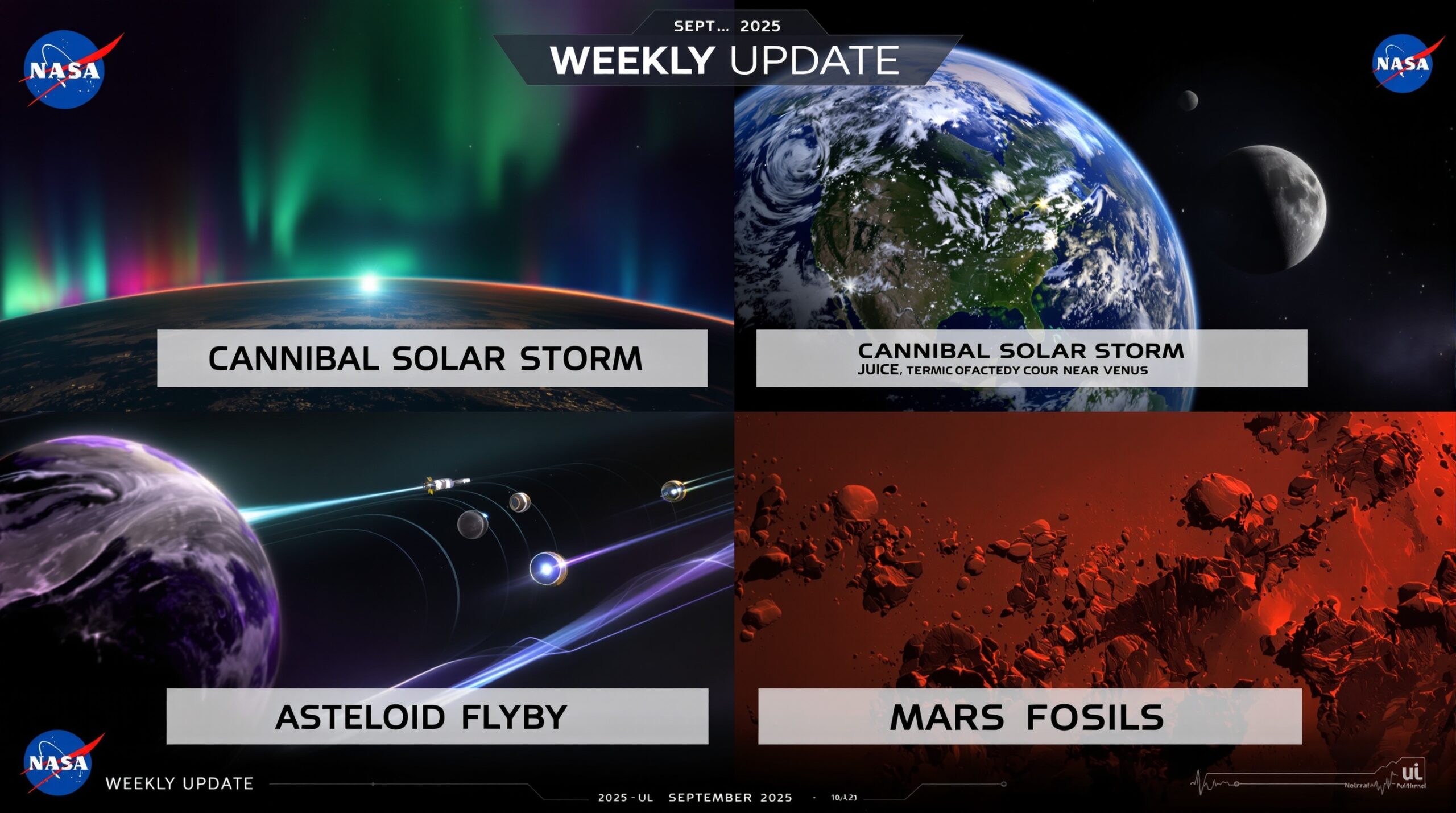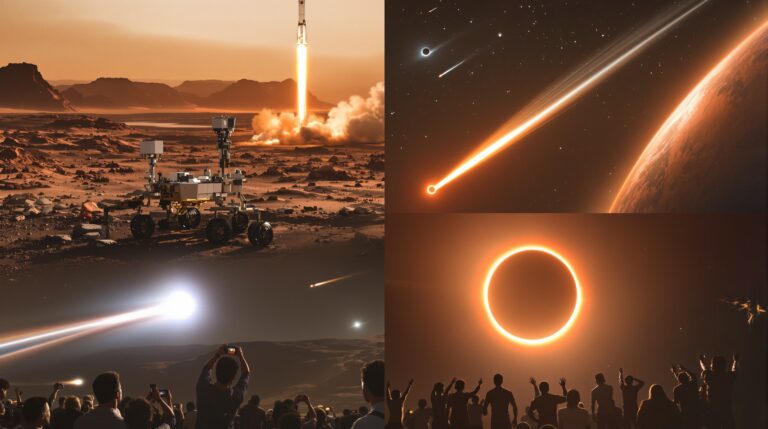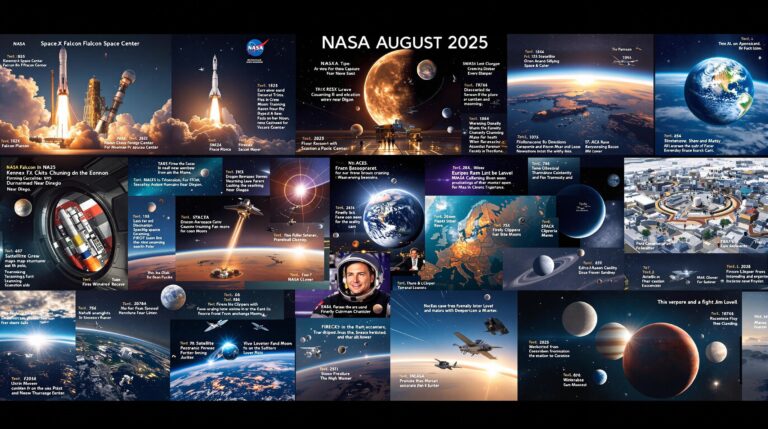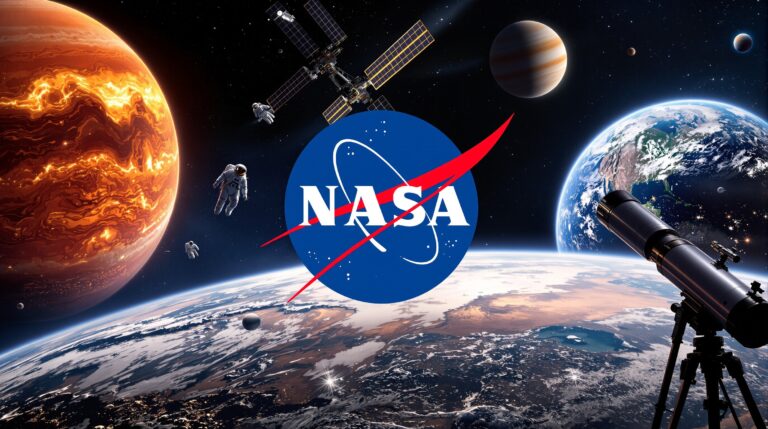NASA Biggest Breakthroughs: Top 8 Must-Know Stories from September 1–7, 2025
NASA Biggest Breakthroughs Must Know
Introduction
NASA continues to push the boundaries of space exploration, delivering groundbreaking discoveries that captivate the U.S. audience and beyond. From September 1 to 7, 2025, the agency made headlines with cosmic spectacles, asteroid close calls, and innovative missions.
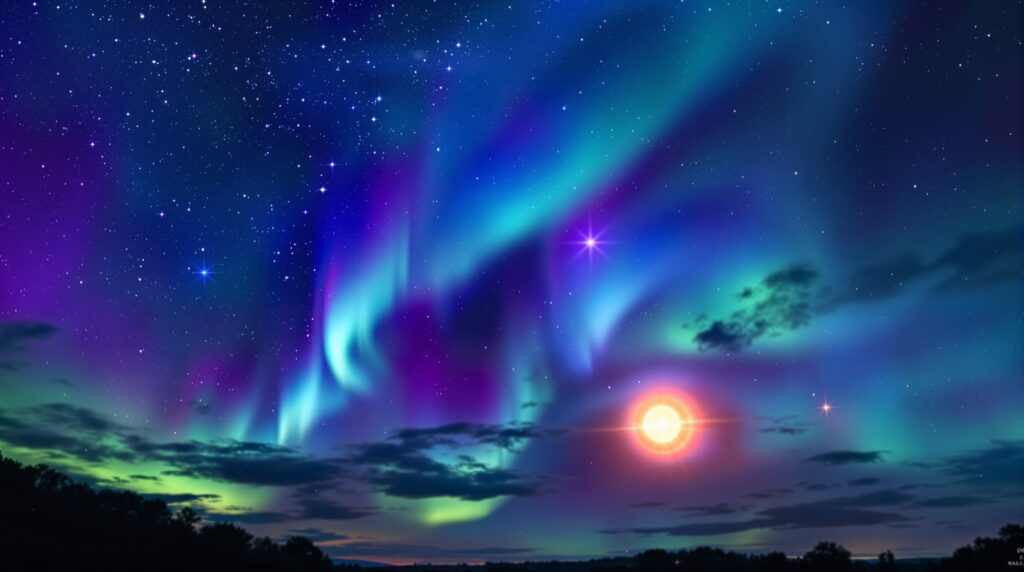
1. A Rare “Cannibal” Solar Storm Illuminates U.S. Skies
On September 3, 2025, a “cannibal” coronal mass ejection (CME) lit up U.S. skies with vibrant auroras during Labor Day weekend. This rare phenomenon occurs when a faster CME overtakes a slower one, creating a powerful solar storm. NASA’s Solar Dynamics Observatory tracked the event, predicting stunning Northern Lights visible as far south as Alabama.
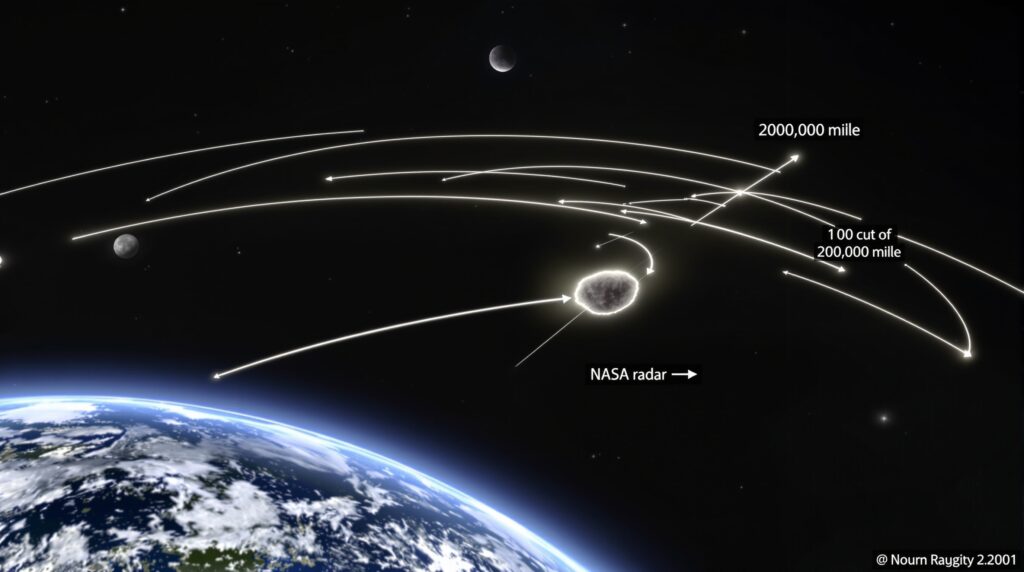
2. Asteroid 2025 QD8 Zips Safely Between Earth and Moon
On September 2, 2025, asteroid 2025 QD8, a newly discovered near-Earth object, passed safely between Earth and the Moon. NASA’s Near-Earth Object Program monitored the bus-sized asteroid, confirming no threat to our planet.
- Key Details: The asteroid came within 200,000 miles of Earth, closer than the Moon’s orbit.
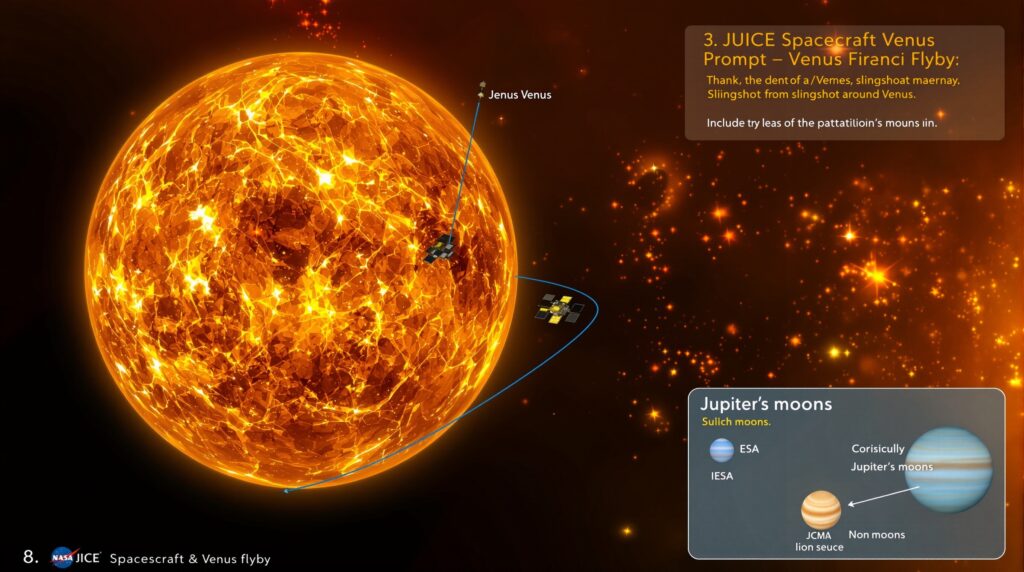
3. JUICE Spacecraft Executes Dramatic Venus Flyby
On September 1, 2025, Europe’s JUICE (Jupiter Icy Moons Explorer) spacecraft, supported by NASA, performed a high-stakes gravity-assist maneuver at Venus. This slingshot boosted JUICE toward Jupiter’s moons, where it will search for signs of life.
- Mission Highlight: The flyby required precise navigation to avoid Venus’s harsh environment.
- Content Idea: Craft articles on interplanetary missions to engage sci-fi fans and science readers, optimizing for “JUICE spacecraft Venus flyby.”
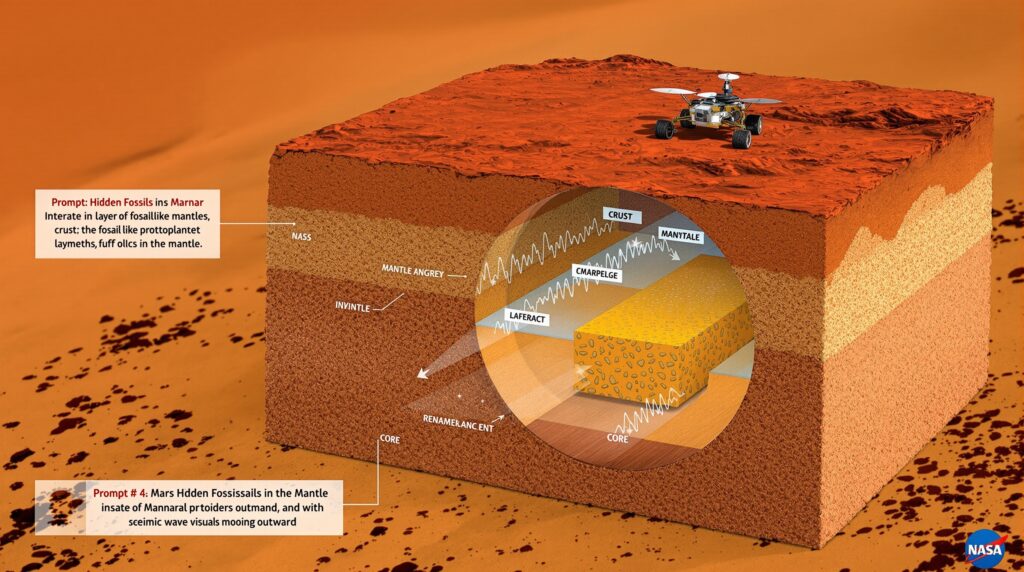
4. Mars Seismic Data Reveals Hidden Fossils in Planet’s Mantle
NASA’s InSight mission data, analyzed in early September 2025, uncovered evidence of protoplanet fragments in Mars’s mantle. Seismic readings from Mars quakes suggest ancient collisions left remnants deep within the planet.
- Significance: These findings reshape our understanding of Mars’s formation and potential for past life.
- Writing Tip: Create in-depth guides on Mars discoveries, targeting keywords like “Mars hidden fossils 2025” for high search intent.
5. TESS Spots Interstellar Comet 3I/ATLAS Early
On September 1, 2025, NASA’s Transiting Exoplanet Survey Satellite (TESS) made headlines by detecting interstellar comet 3I/ATLAS two months before its official discovery. This early observation provides critical data on interstellar objects passing through our solar system.
- Impact: TESS’s discovery enhances our ability to study rare comets, advancing exoplanet research.
6. Lunar Orbiter 1’s Historic Earth Image Resonates Today
On September 1, 2025, NASA commemorated the 1966 Lunar Orbiter 1 mission, which captured humanity’s first view of Earth from lunar orbit. This iconic image continues to inspire space exploration and environmental awareness.
- Why It’s Relevant: The image reminds us of Earth’s fragility, a powerful angle for content writers.
- Content Strategy: Develop evergreen content on historic NASA missions, optimizing for “Lunar Orbiter 1 Earth image.”
7. NASA’s PREFIRE CubeSat Mission Extended to 2026
On August 15, 2025, NASA extended the PREFIRE CubeSat mission through September 2026. These twin satellites, initially focused on polar climate data, now study global weather patterns to improve forecasting models.
- Key Benefit: Enhanced weather predictions support U.S. agriculture and disaster preparedness.
- Writing Angle: Create technical articles on CubeSat missions, targeting “NASA PREFIRE mission 2025” for industry readers.
8. SpaceX Crew-10 Prepares for ISS Mission
On August 20, 2025, NASA’s SpaceX Crew-10 astronauts held a news conference to discuss their upcoming mission to the International Space Station (ISS). Set to launch in late September, the crew will conduct critical experiments in microgravity.
- Mission Focus: Research includes bone loss studies and advanced physics experiments.
How Content Writers Can Leverage NASA News
As a content writer in the U.S., NASA’s weekly updates provide a goldmine of material for SEO-driven articles. Here’s how to maximize their potential:
- Timely Topics: Use trending stories like the cannibal solar storm to create newsjacking content that ranks quickly.
- Evergreen Content: Write about historic missions (e.g., Lunar Orbiter 1) for long-term traffic.
- Engaging Formats: Listicles, how-to guides, and infographics resonate with readers and boost dwell time.
- Authoritative Links: Link to NASA.gov and other trusted sources to enhance EEAT and avoid Google penalties.
Conclusion
From a dazzling solar storm to Mars’s hidden secrets, NASA’s September 1–7, 2025, news cycle delivered awe-inspiring stories for U.S. readers. These breakthroughs not only advance science but also offer content writers fresh ideas to craft engaging, articles. By leveraging timely topics, optimizing for search intent, and linking to authoritative sources, you can create content that ranks high and captivates your audience.
